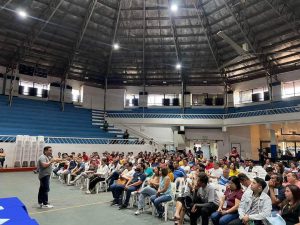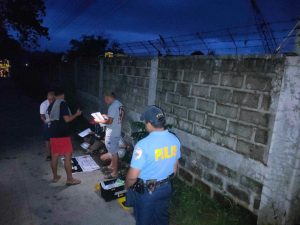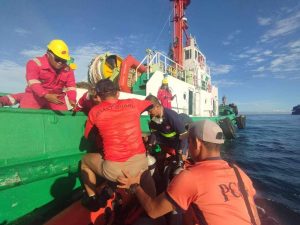Last year, specifically on August 2, 2019, the City Disaster Risk Reduction and Management Office (CDRRMO) reported to the local media it was working on the improvement of its coastal barangays’ monitoring system.
As part of the improvement strategy the CDRRMO report said, it was also enhancing its information and communication system so that residents in coastal barangays of the city can be easily advised on potential disasters that could hit their areas when this is likely to happen.
The local government agency, in the same report, cited the difficulties in conducting emergency evacuations of people in coastal areas primarily because of the very narrow roads and foot paths thereat. These are hardly or totally not passable at all by 4-wheel vehicles that could carry a number of people and belongings in a trip. The CDRRMO also lamented the fact that there are just some residents in disaster-prone areas along shorelines, and even in the hinterlands, that are hard-headed. They ignore demands by government disaster response managers to leave their residence before calamities like sea surges, flooding of river waters when heavy rains occur in time of high tide, fire in the coastal communities, and landslides occur.
We considered that plan very noble and appropriate. So, personally we welcomed the same with much expectation of its getting realized sooner than expected. We also believed then of the likelihood that Davaoenos were one with us in accepting such proposition.
Who will not when it was clear then that the intention of the proponent agency is to ensure the safety and security of Davao City’s huge number of disaster-prone area residents?
But it was our take then as it is still now, that the CDRRMO is still very much wanting in facilities for immediate forewarning of people in high risk barangays of impending disasters. Yes the agency may have installed CCTV cameras in some strategic areas in the city’s coastal communities. These would possibly allow the operation center of the CDRRMO to monitor tidal situations during stormy weather. These could possibly help response managers to assess existing situation and execute the necessary strategy wherever the potential disaster is likely to happen.
Possibly too, the local government may have already provided the different barangays with VHF (very high frequency) radio communications equipment. This, without doubt could allow immediate transmission of instructions when there is an incoming disastrous phenomenon, during the disaster incident, or immediately after.
But one thing we can be certain about. The barangays do not have the facility to immediately relay the warning to the majority of the people, not even in coastal communities where houses are so close to each other that the door of one can be mistaken as that of the other.
This report of the CDRRMO improving its monitoring capability and communications system reminded us of an idea that, if we remember right, was bruited around by the chief of the City Transport and Traffic Management Office (CTTMO), Ret. Police Col. Dionisio Abude.
A few weeks back before the CDRRMO plan was reported Abude was quoted in some local print and broadcast media as recommending to the city government to put up or operate its own radio station. The broadcast facility will have programs devoted to disseminating information about the traffic situation of city roads during certain hours of the day in order to guide motorists which route to take to avoid getting stuck in vehicle gridlocks.
We strongly manifested our support to the Abude recommendation through this column. However, we suggested that the city-operated broadcast station, should this materialize, be maximized in its use. We believe it would be more beneficial to the people of Davao City and even of its neighboring provinces and cities, if the station’s day-to-day programs include dissemination of relevant information coming from the executive and legislative departments of the city government. We believe that, with a city-operated radio station all ordinances and its implementing rules and regulations (IRR) can be discussed and explained on air for the benefit of the residents who have duties and responsibilities defined in these local legislations.
Information dissemination and education on disaster preparedness, mitigation and response must be considered an important regular radio program menu. Segments on environmental protection, rehabilitation of destroyed habitats can also be a daily fare spiced up with the city’s hourly weather situation. This can be tied up with the local PAGASA office.
On another aspect, barangay governments can have time slots where they can highlight their development strides, their own programs and projects so that other village leaders can learn from the experiences being shared.
We think with certainty that using a city-owned broadcast station can transmit information and instructions to target residents in barangays likely to be affected by potential or sure-to-happen disastrous incidents in real time.
Thus, the people in the communities concerned, given correct and immediate information and instructions, can be accordingly guided what to do before it’s too late for them.
With this the city government can be assured that even if disasters strike as these are beyond man’s prevention capabilities, the negative impact on the population could be substantially mitigated.
Lately, as Davao City reels from the deadly Corona Virus Disease (CoViD 19) pandemic like the rest of the major cities in the world, we have heard the City Mayor airing her instructions and CoViD-related advisories on a broadcast station with the tagline “Disaster Radio.” In fact the same station has been given credits and acknowledgments by television news for statements issued by the city mayor.
For now we have no idea if the “Disaster Radio” is already operated by the city or just being tapped by the LGU on block time basis at this time of a devastating health crisis.
But whatever, again, our thought is for the consideration of having a city-operated broadcast station. And let the City Information Office (CIO) take the responsibility of running the radio facility.




